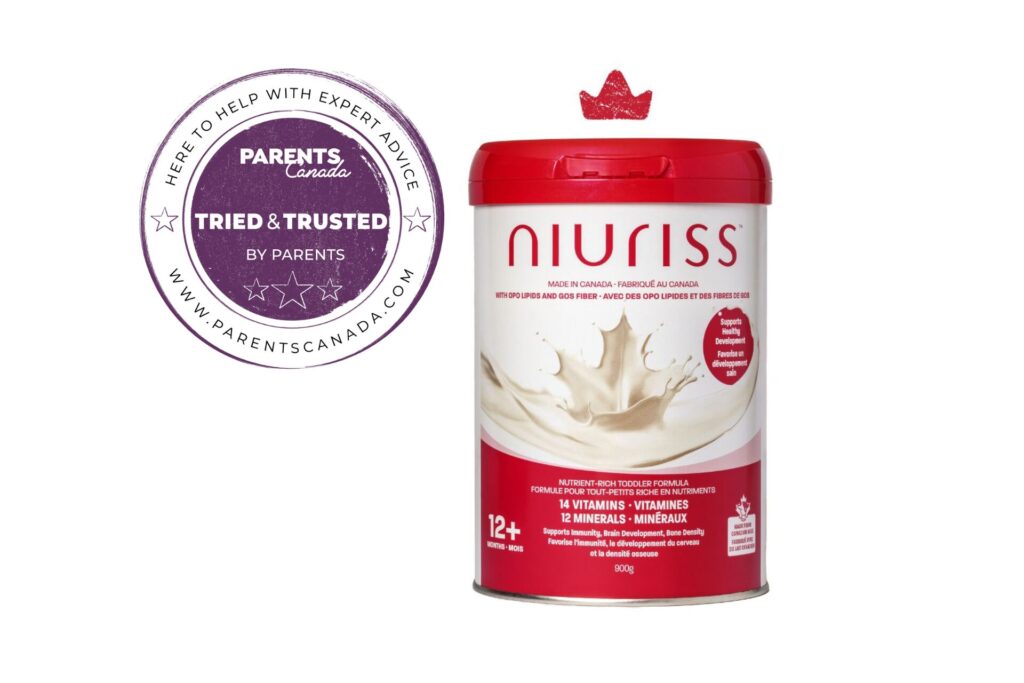
Ruth Waldman remembers the exact moment it occurred to her it might be time to wean her toddler-aged son.
She was visiting her husband’s family in Montreal, nursing son Simon (18 months at the time), when she found herself on the receiving end of some judgmental looks.
“I could see my in-laws looking at me like ‘what are you doing? He’s almost two,’” Ruth recalls. “I’m sad to say I was embarrassed I was still nursing him on demand so I decided I better get it under control.”
That’s when Ruth started the weaning process. It wasn’t easy, but Simon was fully weaned by the time he was nearly 22 months.
Still, in Ruth’s experience, criticism often comes from both sides of the spectrum.
“I was worried about people’s judgments one way or the other, like ‘oh, why are you forcing him to wean?’ or ‘why are you still nursing?’”
While some babies happily give up the breast with little effort, other children like Simon end up nursing well into toddlerhood, and may be very reluctant to stop.
There’s good reason for this, according to La Leche League leader Teresa Pitman. “Breastfeeding is a huge way of connecting for a toddler,” she says, adding that if a toddler is scared, tired, hurt or isn’t feeling well, the first thing they often want to do is nurse.
Parents may also be surprised to learn that toddlers can be getting a lot of their calories from breastfeeding. Teresa says research shows that, depending on the age of the toddler, up to 50 percent of the child’s calories may be coming from breastfeeding.
Replacing these calories is usually pretty easy – you just need to increase your child’s intake of food and milk. But replacing the breast as a source of comfort isn’t quite as straightforward.
“It really helps to think about what you can do to give your toddler extra comfort if you're going to be taking away nursing,” says Teresa. She recommends trying different tactics like cuddling with a child in a rocking chair or spending more time making skin-to-skin contact. Because the sucking instinct remains strong up until around age six, Teresa also recommends giving toddlers sippy cups with built-in straws, which can help satisfy their desire to suck.
Ruth found distracting Simon when he wanted to nurse worked well.
“I would say ‘no’ or ‘let’s do something else’ and I would take him out for a walk, take him to a music class, take him shopping – I just didn’t offer it,” she says.
Dr. Mike Dickinson, chief of pediatrics at the Miramichi Regional Hospital in New Brunswick, says moms should also consider having their partner respond when the child wants to nurse, particularly at night. “If Dad can get up and soothe the child in the middle of the night, that really helps with the nighttime weaning because as soon as the child sees mom, he or she wants milk,” he says.
It’s been two years since Ruth weaned Simon, and she concedes she still feels “a little bit sad” about it.
“I liked feeling the weight of a baby in my arms. I don’t miss the tugging, I don’t miss the leaking, I don’t miss the heavy feeling,” she says, “but I miss the snuggles.”
The World of Breastfeeding
Although breastfeeding a toddler may strike many as strange, it’s far more common than people may realize, especially outside of North America.
According to La Leche League International, in much of the world weaning doesn’t occur until at least two years of age. In fact, the Canadian Paediatric Society has acknowledged that women may want to breastfeed for two years or longer.
Pediatrician Dr. Mike Dickinson and La Leche League leader Teresa Pitman recommend maintaining one or two feeds for a little while longer, if this is possible. This can be a great way to make the transition easier for both the mother and child, and they both may appreciate having that special time together, whether it’s in the morning or at night before the child goes to bed.
Some moms might be surprised at how emotional it can be to end breastfeeding completely, even if they nursed their child well past the age of one.
“I breastfed for 16 months. I still have moments when I miss it, but from the moment I stopped, I made sure we still had those moments of closeness. It helped ease the transition for both of us.” – Melissa D.
Originally published in ParentsCanada magazine, June 2015.










